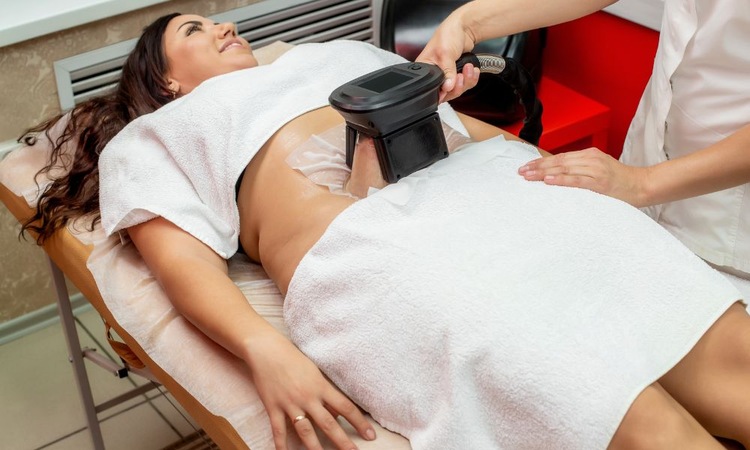Photorejuvenation Methods for Fine Lines and Texture
Photorejuvenation has become a popular approach for addressing fine lines, uneven texture, and aging skin without surgical intervention. These light-based treatments work by stimulating collagen production and targeting pigmentation irregularities, offering a non-invasive path to smoother, more youthful-looking skin. Understanding the available methods, their mechanisms, and what to expect can help you make informed decisions about skin rejuvenation.

As skin ages, fine lines, wrinkles, and uneven texture become more pronounced due to collagen breakdown, sun damage, and environmental stressors. Photorejuvenation offers a range of light-based treatments designed to address these concerns by promoting cellular renewal and improving skin quality. These procedures have gained popularity for their ability to deliver noticeable improvements with minimal downtime compared to traditional surgical options.
How Does Photorejuvenation Work for Aging Skin?
Photorejuvenation uses targeted light energy to penetrate the skin’s surface and stimulate collagen production deep within the dermal layers. Intense Pulsed Light (IPL) and laser-based systems emit specific wavelengths that are absorbed by pigmented cells and blood vessels, breaking down discoloration and encouraging the body’s natural healing response. Over time, this process leads to smoother texture, reduced fine lines, and a more even complexion. Multiple sessions are typically recommended to achieve optimal results, with improvements becoming more visible as collagen remodeling continues in the weeks following treatment.
What Are the Most Common Photorejuvenation Techniques?
Several photorejuvenation methods are widely used to target fine lines and texture concerns. IPL therapy is one of the most versatile, addressing sun damage, age spots, and redness alongside textural improvements. Fractional laser treatments create micro-injuries in the skin, triggering repair mechanisms that replace damaged tissue with fresh, healthy cells. Non-ablative lasers work beneath the surface without removing the outer layer, making them suitable for those seeking minimal recovery time. Ablative lasers, while more intensive, provide dramatic resurfacing by removing the top skin layers entirely, resulting in significant texture refinement and wrinkle reduction.
Who Is a Good Candidate for Light-Based Skin Treatments?
Ideal candidates for photorejuvenation are individuals with mild to moderate signs of aging, including fine lines, sun damage, and uneven texture. Those with lighter skin tones historically responded best to many laser treatments, though advances in technology have expanded options for darker skin types. Candidates should have realistic expectations and understand that results develop gradually over several weeks or months. People with active skin infections, certain medical conditions, or those taking photosensitizing medications may need to delay treatment. A consultation with a qualified practitioner is essential to assess skin type, discuss goals, and determine the most appropriate approach.
How Much Do Photorejuvenation Procedures Typically Cost?
The cost of photorejuvenation varies widely depending on the type of treatment, geographic location, provider expertise, and the extent of the area being treated. IPL sessions generally range from 300 to 600 dollars per treatment, with most patients requiring three to five sessions for optimal results. Fractional laser treatments typically cost between 500 and 1,500 dollars per session, while more intensive ablative procedures can range from 1,500 to 4,000 dollars or more. Many clinics offer package pricing for multiple sessions, which can provide cost savings compared to individual treatments.
| Treatment Type | Typical Cost Range (Per Session) | Sessions Needed |
|---|---|---|
| IPL Therapy | 300 - 600 dollars | 3 - 5 |
| Fractional Non-Ablative Laser | 500 - 1,200 dollars | 3 - 6 |
| Fractional Ablative Laser | 1,500 - 3,000 dollars | 1 - 3 |
| Full Ablative Resurfacing | 2,000 - 4,000 dollars | 1 - 2 |
Prices, rates, or cost estimates mentioned in this article are based on the latest available information but may change over time. Independent research is advised before making financial decisions.
What Should You Expect During and After Treatment?
During a photorejuvenation session, patients typically experience a snapping or warming sensation as the light energy is delivered to the skin. Topical numbing cream may be applied beforehand to minimize discomfort. Treatment duration varies from 15 minutes to an hour depending on the area being addressed. Immediately afterward, mild redness, swelling, or a sunburn-like sensation is common and usually subsides within a few hours to a couple of days. Non-ablative treatments generally require no downtime, while ablative procedures may involve several days of healing with visible peeling or crusting. Sun protection is critical during the recovery period and in the weeks following treatment to protect newly rejuvenated skin and maintain results.
How Can You Maintain Results After Photorejuvenation?
Sustaining the benefits of photorejuvenation requires ongoing skin care and sun protection. Daily use of broad-spectrum sunscreen with SPF 30 or higher is essential to prevent further sun damage and preserve improvements. Incorporating antioxidants, retinoids, and hydrating ingredients into your skincare routine can support collagen production and skin health. Periodic maintenance treatments, typically once or twice a year, help prolong results and address new signs of aging as they emerge. Avoiding smoking, maintaining a balanced diet, and staying hydrated also contribute to long-term skin vitality. Consulting with a skincare professional for personalized recommendations ensures your regimen aligns with your skin type and goals.
Conclusion
Photorejuvenation offers a range of effective, non-surgical options for addressing fine lines, uneven texture, and other signs of aging. By understanding the different methods available, their costs, and what to expect during treatment and recovery, you can make informed choices that align with your skin concerns and budget. With proper care and maintenance, these light-based treatments can help you achieve smoother, more radiant skin and maintain a youthful appearance over time.




